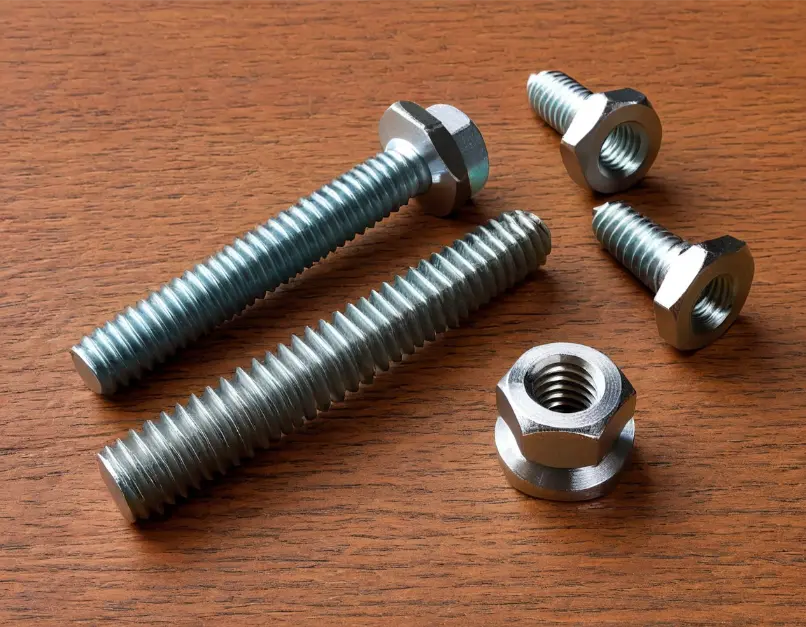any builders and engineers rely on precise calculations to ensure the integrity and safety of wooden structures. A wood connection calculator is an imperative tool that assists them in determining the appropriate connections and fasteners for various woodworking projects.
By inputting specific parameters, they can quickly ascertain the necessary dimensions and material specifications for joints, helping to prevent structural failures and enhance overall durability.
This blog post will investigate into the functionalities of a wood connection calculator, highlighting its importance in effective woodworking and construction practices.
Wood Connection Calculator
Understanding Wood Connections
To design sturdy and long-lasting wooden structures, it is crucial for builders and engineers to understand wood connections.
These connections are imperative for transferring loads and ensuring the stability of the entire frame. By grasping how different types of connections interact under pressure, they can make informed choices that enhance the integrity of their projects.
Types of Wood Connections
To effectively connect wood components, various types of wood connections are available:
- Butt Joints
- Lapped Joints
- Dovetail Joints
- Mortise and Tenon Joints
- Finger Joints
Recognizing these connections enables them to select the most suitable method for their specific applications.
| Type of Connection | Application |
| Butt Joints | Simple framing tasks |
| Lapped Joints | Providing added strength |
| Dovetail Joints | High strength and aesthetics |
| Mortise and Tenon Joints | Traditional woodworking |
| Finger Joints | Creating long, stable boards |
Importance of Calculating Connections
Types of wood connections play a vital role in construction, making it imperative for professionals to calculate the strength and suitability of these connections accurately.
Importance of calculating connections lies in their ability to ensure that loads are properly distributed and that the overall structure remains solid under various conditions.
By meticulously assessing each connection, builders can prevent structural failures, enhance performance, and prolong the lifespan of wooden structures.
Each connection must be tailored to specific environmental conditions and load requirements, further underscoring the necessity of precise calculations in woodworking.
Wood Connection Calculator Overview
Some individuals seeking to simplify their woodworking projects can benefit greatly from a wood connection calculator.
This tool enables users to determine the appropriate connections for various wood structures, ensuring strength and safety while optimizing materials.
By inputting specific parameters, they can receive accurate calculations for joint load capacities, enhancing the overall effectiveness of carpentry efforts.
Features and Functionality
Overview, this calculator includes important features such as customizable load inputs, connection types, and material specifications.
Users can easily navigate through options to determine the best connections for their projects, ensuring that all calculations adhere to industry standards.
Additionally, it provides detailed reports that users can reference, helping them make informed decisions regarding their woodworking endeavors.
User Interface and Experience
Functionality is a key aspect of the wood connection calculator, as it has been designed with a user-friendly interface that allows for seamless navigation.
Users can input data effortlessly, thanks to well-organized menus and intuitive controls. The responsive design ensures that individuals can access the tool on various devices, enhancing accessibility for both professionals and hobbyists alike.
A straightforward layout and clear visuals make it easy for individuals to understand the calculations and results provided by the calculator.
The integration of helpful tips and FAQs further enhances user experience, guiding them through any potential uncertainties.
They can also benefit from the calculator’s efficient performance, enabling them to quickly obtain results without overwhelming complexity, thus facilitating a more effective woodworking process.
Input Parameters for Calculation
One of the most crucial aspects of a wood connection calculator is the input parameters. These parameters help to ensure accurate calculations and reliable design outcomes.
By inputting specific data regarding the wood type, grading, load conditions, and safety factors, users can achieve precise results for their woodworking projects.
Wood Type and Grading
On determining wood type and grading, users can significantly influence the performance of a wood connection.
Different wood species possess distinct characteristics, such as density, moisture content, and strength, which directly affect their connection capabilities. By selecting the appropriate wood type and grade, users can optimize the connection strength and durability.
Load Conditions and Safety Factors
Type of load conditions and safety factors play a vital role in wood connection calculations. They encapsulate the various forces acting on the connection, including axial, shear, and bending loads. Recognizing these loads enables users to apply the necessary safety factors to ensure the connections can withstand potential stresses without failure.
- Shear strength considerations
- Dynamic load adjustments
- Static load assessments
- Environmental influences
This understanding is important for designing safe and efficient wood connections.
To deepen the understanding of load conditions and safety factors, it is important to consider the various aspects influencing load calculations.
Users need to factor in both live and dead loads, distribution of forces, and any potential dynamic impacts that could affect the connection integrity.
- Live load considerations
- Dead load definitions
- Impact load adaptations
- Serviceability requirements
This comprehensive approach ensures that connections remain robust under varying conditions.
Output Results
Once again, the wood connection calculator provides users with clear and concise output results that reflect the calculations performed.
This output includes imperative information such as load capacities, connector specifications, and any relevant safety factors.
Users can utilize this data to ensure that their designs meet applicable building codes and standards, ultimately leading to safer and more reliable structures.
Interpretation of Results
For the users of the wood connection calculator, interpreting the results accurately is crucial for effective design decisions.
They must pay close attention to the calculated values and ensure they align with the requirements of the intended application to maintain structural integrity.
Recommendations for Design
Interpretation of the results indicates that users should carefully consider each output when planning their designs.
They should prioritize values that reflect the most stringent safety and performance standards, as these metrics will inform the selection of appropriate materials and connections.
Results from the wood connection calculator suggest that users should not only trust the calculations but also conduct further analysis to verify their suitability.
Designers are encouraged to consider factors such as environmental influences, load variations, and potential future modifications in their design process. By following these recommendations, they can enhance the robustness and durability of their wood structures.
Common Mistakes in Wood Connection Calculations
Many individuals encounter common pitfalls when calculating wood connections, which can compromise safety and structural integrity.
These mistakes often stem from a lack of understanding of necessary parameters, improper application of formulas, or overlooking the importance of adhering to engineering principles. By identifying and addressing these errors, designers and builders can enhance the durability and reliability of their wood constructions.
Misunderstanding Input Values
Mistakes in understanding input values can lead to inaccuracies in wood connection calculations. He or she may confuse dimensions, material properties, or loading conditions, resulting in insufficient connection strength. Accurate input values are crucial for ensuring that the connection meets safety and performance standards.
Ignoring Industry Standards
Industry standards play a pivotal role in wood connection calculations. They provide important guidelines and specifications necessary for ensuring structural integrity and safety. When he or she ignores these standards, they risk creating connections that fail under load or are non-compliant with building codes.
Values established by organizations such as the American Wood Council or the International Building Code set the benchmarks for material strengths and design practices.
He or she must prioritize adherence to these standards during calculations, as they can dictate the acceptable range of loads and stresses. Moreover, following these guidelines ensures consistency and reliability throughout the industry, safeguarding both the builder and the end-user.
Best Practices for Using the Calculator
Your effectiveness when using the wood connection calculator greatly depends on understanding its capabilities and limitations. He, she, or they should always ensure they are familiar with the specific types of connections and parameters the calculator evaluates.
Additionally, care should be taken to input correct values, as this directly impacts the accuracy of the results.
Ensuring Accurate Measurements
To achieve reliable outcomes, individuals should take precise measurements of all relevant components. This entails measuring wood thickness, connection dimensions, and load requirements accurately.
He, she, or they must also consider factors like wood species and moisture content, ensuring that each variable reflects the actual conditions. Proper preparation is key to obtaining valid results.
Verifying Results with Manual Calculations
Practices involving manual calculations can serve as a valuable check against the calculator’s output. He, she, or they should cross-verify results by applying fundamental engineering principles and formulas relevant to wood connections.
This dual approach takes advantage of both technology and traditional methods, ensuring a comprehensive understanding of structural requirements.
The verification process ensures the reliability of the calculator’s results and reinforces the understanding of the underlying principles guiding wood connection design. He, she, or they should undertake calculations using known formulas for shear, bearing, and tensile strength, factoring in safety margins. This practice not only enhances confidence in the results but also promotes a deeper comprehension of wood engineering principles, resulting in safer and more robust constructions.
Conclusion
Ultimately, the wood connection calculator serves as an invaluable tool for architects, engineers, and builders in the construction industry.
By providing precise calculations for load-bearing joints and connections, it ensures that structural integrity and safety standards are met.
He, she, and they can rely on this calculator to make informed decisions, optimize materials, and enhance the overall efficiency of their projects. As technology continues to evolve, the importance of such tools in promoting both sustainability and durability in wooden structures cannot be overstated.








